You are unlikely to be able to find a cottage plot on which at least one apple tree is not growing. This fruit tree is widely grown and on an industrial scale. A huge number of songs and poems are folded about the apple tree, there are many legends, legends about apples and apple trees. Is it difficult to grow apple tree in the garden yourself? In this article you will learn everything about the apple tree, landing and caring for her in the garden. You can also compare the varieties and choose the best apple tree for yourself.
Apple tree - Botanical description
- Apple tree is a leaf fall tree or shrub belonging to the family of pink.
- The country of the northern hemisphere with a temperate climate is considered the country of the apple tree.
- There are more than 62 species of apple tree.
- Apple tree can reach from 2.5 to 15 meters in height depending on the variety and gravity conditions.
- The shoots of the apple tree are conventionally divided into 2 types: fruiting shoots that are shorter, and growth, which are characterized by more impressive sizes.
- Some varieties of apple trees growing in wild conditions have spines.
- The shoots of an apple tree are richly covered with leaves on the petioles that can have both bare and slightly shedding surface.
- The root system of the apple tree is represented as horizontal roots, which in diameter exceed the size of the crown and vertical, departing in the distance to a distance of up to 10 meters.
- The flowering period of the apple tree begins in the middle or late spring. Flowers can be painted in a snow-white, white-pink or rich pink shade. Depending on the species, apple tree flowers can be collected in umbrella or palate small inflorescences.
- From the 4th year of life, the tree apple tree begins to form rounded fruits - apples that can have green, yellow, red, pink shade. In some varieties, apples reaches 15 cm in diameter. Since ancient times, the fruits apple trees are used both in fresh form and in the recycled. Apples are dried, preserved, widely used in the preparation of confectionery, pastries, desserts. Apples are valued for the rich content of vitamins, microelements and other useful substances.
- The average duration of the apple tree is 100 years old, but in the wild conditions the trees live up to 300 years.
- Apple tree is a frost-resistant tree that can perfectly carry the temperature to -42 degrees.
- Apple tree - beautiful honey, attracting a large number of insects during flowering period.
Apple tree - Photo
Apple trees
The classification of apple trees is not desirable, and in various sources you can find different information. It is known that the genus of the apple tree combines more than 50 species. The most popular is the following types of apple trees:
- apple tree favings. The view was named after Botany, who first described this view at the end of the XIX century. The tree is capable of reaching 8 m in height. A distinctive feature of this species is its high decorativeness. During the flowering period of the apple tree, which usually occurs in late May, the tree is covered with juicy pink flowers and purple leaves. Apple tree fruits also have a bright purple color. The view is known for excellent frost-resistant characteristics, highly resistant to unfavorable environmental conditions and pests;
- apple tree berry. The birthplace of this species is Eastern Siberia and Manchuria. The tree grows up to 10 m in height, has an empty crown. The species is very decorative due to lush flowering and an unusual form of fruits. Apples resemble berries according to their size - just 1 cm in diameter! These miniature apples are yellow, red is long hanging on shoots on long stiffs;
- apple tree chinese. Nordic regions of China are considered to be the birthplace of this type of apple tree. The tree reaches 7 meters in height. The decorative value of the apple tree gives abundant flowering and the form of fruits. Apples are often called "paradise apples" reaching only 2 cm in diameter. Chinese apple tree leaves very much resemble chinese plum leaves;
- apple tree wild. This type of apple tree can grow both with a tree and an empty large bush. Trees can reach up to 10 m in height. Flowers apple tree abundantly. A distinctive feature of this species is its high yield - from one tree you can collect up to 60 kg of harvest. But the fruits from such trees can not boast of their taste - they are small and very sour. It is the apple tree wilderly is the "springchalnik" of many varietal apple trees;
- apple tree Siversa. Trees of this species are able to reach 10 m in height. Sometimes shoots can be covered with spines. Apple tree leaves oval, slightly elongated. Young leaflets have lowered bottoms, and "adults" is smooth. An apple tree blooms white and pink. Fruits do not differ in large sizes - up to 5 cm in diameter;
- apple tree brown. Decorative type of apple tree, which is often used to decorate gardens, squares, parks. The tree can reach 12 meters in height. Oval leaves and slightly pointed, can be divided into blades. The top side of the sheet is more dark than the lower. The fruits of the apple drone are achieved in a diameter of only 1-1.5 cm.
Apple tree varieties
If you are just going to plant apple trees in your garden, then you must trigger a little in the varieties of this culture. There is a classification of apple trees according to the following signs:
- in terms of ripening: summer, autumn, winter;
- spearflocity: Surpulsion, middle-deployed varieties, Late Blood Varieties;
- depending on winter-hardy characteristics: winter-hardy varieties, low-grade varieties, medieval varieties, high-resistant varieties;
- depending on the application: Decorative and varieties of fruit;
- depending on the height: Tall varieties, varieties are average, dwarf varieties;
- depending on the type and shape of the crown: varieties with a scattered crown, wearing apple trees, colon-shaped apple trees;
- depending on the taste of fruits: varieties with sour apples, varieties with sweet apples, varieties with sour-sweet apples;
- depending on the size of the fruit: varieties with very large apples, varieties with large apples, varieties with medium apples, varieties with small apples.
When you choose any particular apple trees for landing on the site, consider all the characteristics listed above.
Summer varieties apple trees (early)
Early apples are distinguished by loose and juicy softness, sweet taste. Such apples are stored for short, they are most often used in fresh form. Among the most popular early sorts of apple trees can be allocated as follows:
- White filling - All known varieties of summer apples, distinguished by special sweetness and juiciness. Apples have yellow or yellow-green color. The middare tree, begins to bring harvest for the 5th year after landing. Winter-hardy variety, with good resistance to adverse environmental conditions, to pests and diseases;
- Early sweet - Summer grade of apples that have a slightly indisposed shape, yellow or greenish color. Trees begin to bring harvest usually for the 4th year after landing;
- Melba - Early sort of apple trees, which has an average degree of frost resistance, has a tendency to a disease of a pair. Apples are valued for the sour-sweet pleasant taste.
Autumn varieties of apple trees
- Anis White. Midhranny apple trees. Fruit tree starts 5-6 years after landing. The disadvantage of this variety is that the fruits appear not every code. The apple tree grows with an empty crown in the form of a pyramid. The fruits are covered with waxing, allowing apples stored until winter. Grade winter-hardy;
- Urals. Apple trees of this variety are beginning to bring harvest for 3-4 years after landing. Apples have high taste characteristics. The variety is valued for winter hardiness and resistance to the paschers;
- Oryol Garland. Excellent autumn variety of apple trees that begin to be fruit on the 5th year after landing. Apples have a bright sour-sweet taste and a strong aroma. The grade is winter-hardy and sustainable asked.
Winter varieties of apple trees
- Antonovka ordinary. This winter grade is known to everyone. Apples are painted in green, have a little flashed out of the bottom, it is perfectly stored. The disadvantage of this variety is that the trees begin to bring harvest only to the 8th year after landing;
- Moscow winter. Excellent late apple grade, distinguished by winter hardiness and resistant to the brush. Apples ripen at the end of September and are perfectly stored until the middle of the spring. Tree is high-voltage, with a scattered crown;
- Health. Apple trees of this variety are stripped, with a spreaded crown, prone to thickening. Gardeners love this variety for its high yield, as well as good winter hardiness and immunity to the brush.
Winter-hardy varieties of apple trees
- Michurinskaya Meshamianka. Apple trees bring harvest every year. Apples have a pleasant sour-sweet taste, covered with fine waxing, allowing fruits to be stored for 3 months.
- Autumnal aloe. Apples of this variety are painted in a pleasant yellow color with red stripes. Cathedral trees with a spreaded crown;
- First salute. Excellent winter-hardy apple trees, which gives a rich harvest of fragrant sour-sweet apples. Fruits can be stored about 3 weeks.
High-resistant varieties of apple trees
- Anis Alla - A variety that does not frozen even during harsh winters with a temperature of up to -40 degrees. In various regions, apples ripen in different times. Fruits delicious, green, with a red blush.
- Horsicpel. Apple trees are pretty high and with empty crowns. The fruits have a slightly "faceted" surface, painted in a green color with reddish stripes. The pulp is quite juicy, but without a bright taste.
Decorative varieties of apple trees
- Royalties. Apple tree of this variety has an unusually spectacular appearance. A splashing shrub generously was covered with red-purple leaves, bought rich red to autumn.
- Rudolf. Apple tree under favorable conditions grows up to 5 meters in height and has an empty crown. A distinctive feature of this variety is that apples achieve only 3 cm in diameter and by the end of maturation acquire an orange tint.
Dwarf varieties of apple trees
- Wonderful. Dwarf variety with a beautiful crown of compact shape and low location to the ground. The fruits achieve in the mass of 200 grams and have a pleasant sour-sweet taste. The trees of this variety are winter-hardy, with good resistant to the paschers.
- Sokolovsky. Dwarf variety apple trees, characterized by a horizontally directed form of the crown. Late variety, apples can be stored for about 3 months.
Planting apple
Choose time for planting an apple tree
You can plant an apple tree both in spring and autumn. And that, and in other time the landing has its advantages and disadvantages.
- Autumn planting of the apple tree is usually produced in mid-October, after leaffall. Many gardeners consider the autumn fit the best, since the root system of a young seedling will have time to "acclimatize" for the autumn-winter period and in the spring to join the phase of vegetation with maximum power. If you decide to plant a tree in the fall, then you do not need to put any fertilizers into the landing point, since the tree can "wake up" when not necessary. Only with the establishment of sustainable frosty weather, you can scatter around the fertilizer seedling, which will fall to roots with melting of snow.
- Spring landing is made early in spring until the kidney awakening. It is important not to be late and not miss the term. Cooking the planting pit for an apple tree follows in the fall. The main feature of the spring landing is regular and abundant watering of the young tree.
Choose a place and soil for planting an apple tree
In order for the apple tree to give you a tasty and useful harvest for more than a dozen years, to choose the place of landing sites with care.
- Choose a place away from too high and old trees that will close their crown light for an apple tree.
- Choose a rather open place, but protected from drafts.
- Choosing a place to plant an apple tree, take into account its variety. It is clear that for tall apple trees and for dwarf apple trees you need various free space around.
- Choose a place to plant an apple tree with not too acidic soil enriched with nitrogen, fertile. If the land on your site is not particularly fertile, then this problem can be easily solved by making fertilizers.
- Choose a place to plant an apple tree where groundwater flows are not closer than 1-1.5 m from the surface of the Earth. If the water is adjacent to the surface, then only dwarf apple trees can grow in such a place. You can sit down and tall varieties, but only subject to the creation of a mound.
- Choose a place to plant an apple tree where the fruit trees did not grow up. If you want to plant an apple orchard on the spot of the chopped old garden, it is desirable to sing meadow grass to this site for 1-2 years.
Choose apple seedlings
Choosing a seedling of an apple tree is a very responsible thing. Take into account the following recommendations:
- do not buy seedlings with a closed root system. You do not know what condition is the roots. Perhaps the tree is located in a pot for a very long time, his roots were implanted into a dense tangle. Perhaps the roots of the tree are sick, infected with pest, etc.;
- buy the seedlings of the apple trees of those varieties that are recommended for cultivation in your region. It is better to buy landing material in specialized nurseries, where trees were grown in the climate of your region;
- buy seedlings apple trees of several varieties, as this culture is a cross-perishable;
- buy annual or two-year-old Apple tree seedlings from 120-130 cm. At the lowest, mid-hearted apple trees The sapling should look like one twig without side branches. Two-year-old seedlings of tall apple trees can have 2-3 skeletal branches. Dwarf apples can have 3-5 skeletal branches;
- when buying apple seedlings, you particularly carefully pay attention to the root system. Roots should be without visible signs of diseases, without mechanical damage, without rot, they should not be overdocated, donomans. Healthy apple root should have a light color on a cut. If the color is dark, then the landing material is poor quality;
- do not buy apple seedlings that dug up until October 10 and have leaves. A seedling at the beginning of autumn begins to prepare for winter, all nutrient elements begin to concentrate in the root system. If the tree dug at this moment, it is not known how it will take the landing to a new place;
- when transporting the roots of the plant, the apple tree is necessarily wrapped in a wet cloth, and then into a plastic bag to prevent the loss of moisture with the root system.
Cooking the boarding hole for an apple tree
As for the preparation of landing pit, each gardener has its own way of soil preparation based on many years of experience and on knowledge of the characteristics of the soil on the site. Consider the most general rules for the preparation of landing pit for planting an apple tree:
- in the spring planting of the apple tree, the landing pit is prepared in the fall, and with autumn landing - approximately 1 month before the landing;
- the pit is digging with a diameter of 50-60 cm. The depth of the landing pits depends on the size of the root seedlock. The sizes of the pits should be increased if the planting of the apple tree will be made on the casting land;
- when you dig a landing pit, then divide the upper ground from Lower to different sides;
- if the earth is highlighted with increased acidity, then at a peroxide, make lime. But consider that the lime in no case should come into contact with the roots of an apple tree seedling;
- now proceed to the preparation of the soil from the top of the pit. We mix it with 1-2 buckets of humus or peat, add mineral fertilizers - 300 grams of superphosphate, 50 grams of potassium chloride or 350 grams of wood ash.
How to plant an apple tree - technology
If the landing pit is prepared, then proceed to the planting process.
- The roots of the seedling before planting are desirable to soak in water for a day to fill the moisture reserves.
- At the bottom of the landing pit, holly pour the prepared nutritional soil.
- In the center of the hill, install a peg that will maintain a young tree.
- Install the seedling near the caplesska so that its root neck towers over the ground is 5-6 cm.
- Hold the seedling with one hand, and repent it to the roots. Start pouring out the pit with a nutrient soil, periodically shaking the seedling so that the earth is filled with all air emptiness in the roots.
- Gate ground around a seedling.
- Tie a young apple tree to the peg.
- Build a furrow for watering around the village.
- Understand the apple tree immediately after landing. On one plant will need 3-4 buckets of water.
- After irrigation, the surface of the earth around the apple must be inspired.
- The soil, which was dug off from the bottom of the pit, scatter in the aisle.
Care for apple trees
Caring for an apple tree in spring
- The young tree of an apple tree in spring, and especially immediately after planting, needs watering. The first 1.5 months water the apple tree 1 bucket of water every week. You can then increase the interval between the arms of the apple tree to 2-3 weeks. Of course, if it rains all the spring, then you don't need to water the young tree every week.
- In the spring, after landing, it is advisable to shorten a seedling for 2-3 kidneys to stimulate the growth of side shoots. If the sideways are already present on the tree, which are longer than the central escape, then shortened slightly and their.
- Make sure that the soil around the apple tree has always been inspired. You can use for the bottom layer of mulch manure, chicken litter, and for the upper layer - straw, grass.
- In May produce foliar fertilizer of apple trees, for which the drug is suitable Effekton fine. In one bucket of water was dissolved 1 tbsp means and sprayed apple.
Caring for the summer apple tree
Summer care of the apple tree is not particularly difficult. You just continue to follow the established irrigation regime - it will be the main element of summer care.
- To the root system of young apple trees get enough air in the summer, make a distance of 50-60 cm from the puncture of the barrel in the ground to a depth of 3-40 cm.
- Water the tree in the evening. If the summer was too hot and dry, use a sprinkler method.

- During the summer, activated various insect pests. To protect them from the apple tree, arrange bird feeders, which will be the most faithful defenders of apple trees from insects. Regularly inspect the apple. If you notice a pest, then just collect them by hand. Since the trees are still small, it will not be difficult.
- In June, again leaves of apple treat with a solution of Effektona. This can be done at the beginning and end of the month.
- In July, the scatter in the tree trunks of apple wood ash before watering.
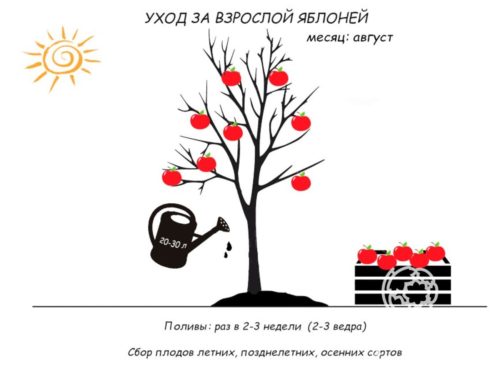
Care for an apple tree in autumn
In the autumn to help a young apple tree to prepare for winter. The main autumn care is made in the following areas:
- every tree apple tree you need to hill at a height of 15-20 cm;
- autumn also need to make a new layer of mulch is organic, and the top with straw or dry grass;
- trunks of young apple trees in autumn whitewashed with chalk;
- to protect plants from rodents for which the bark is a true treat apple, barrel wrap lapnikom or any other cover material.
Care for an apple tree in winter
If you have properly prepared for winter apple, then with the arrival of cold weather you do not need to do anything. If the trunks of young trees with soft bark for winter chalk whitewash, the trunks of apple trees older treated with lime mortar. To prepare such a solution you will need:
- 1 bucket of water;
- 1 kg of clay;
- 3 kg of lime;
- 0.5 kg of copper sulfate;
- 100g wood glue.
In winter, try to trample down the snow in tree trunks around the apple.
fertilizing apple trees
Adults are advised to feed apple 4 times per season.
- The first dressing is done at the end of April. Use organic (manure, dung) for mulching.
- The second feeding is made in the period before the flowering of the apple tree. In 200 liters of water dissolve 1 kg of superphosphate, 1 packaging effect, 0.8 kg of potassium sulfate. The resulting solution is leaving for a week, after which they make 40-50 liters for each tree. To introduce such a liquid fertilizer should be 60 cm at a distance from the barrel.
- The third feeder is made during the ripening of fruits. In 200 liters of water dissolve 20 gr. Sodium humate, 1 kg of nitroposki. Fertilizer is also made at a distance of 60 cm from the trunk and only on the moistened soil.
- The fourth feeder is made after harvest. You can make fertilizers with a dry way if autumn rainy. For each apple tree, 300 grams of potassium sulfate and 300 grams of superphosphate are brought.
Experienced gardeners advise not to forget about the extra-root feeders for the apple tree, which not only compensate for the possible deficit of trace elements, but also protect trees from pests. Usually, the leaves, trunk, the shoots of the apple trees are sprayed with a solution of urea or a Kemira preparation, following the instructions on the package.
How to instill an apple tree
Why do you need to make an apple tree vaccination? This may be needed in various cases. You may just want to experiment and try to grow several varieties of apples on the same tree. You may want to "reflect" a wild apple tree, try to save a tree, which is badly damaged by rodents, save space in its plot, etc. You can put an apple tree at any time thanks to the existence of various ways to vaccinate. But the spring vaccination has a huge advantage - during the growing season you can watch, a new escape arrived or not. Briefly consider ways to vaccinate the apple tree:
- kopulovation is simple. This method is selected when there is an approximately the same thickness;
- copulizing improved. This method of copulings differs from copulings with a simple fact that on the stock and cable instead of oblique sections are made longitudinal with the formation of "tongue";
- brewery for Corra. This method of vaccinations are chosen before the selection of the sludge period when the bark is still well from the trunk;
- grafting in split. In the wood, a split is made in which the cuttings are inserted;
- vaccination in the semi-trap. The advantage of this method of vaccinating an apple tree is that the tree is injured less, since only a small part of escape is split;
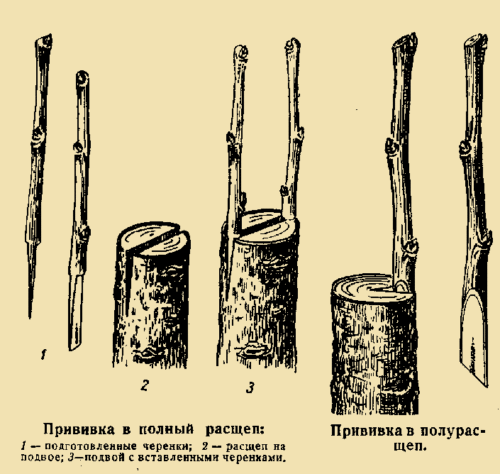
- the vaccination of the apple tree in the side shear. This method you can instill an apple tree both in spring and summer, and in winter;
- grafting by bridge. Gardeners are very often choosing this method of vaccinating an apple tree in cases where rodents have arrived a bark in the stem circle. The cuttings are inserted behind the bark "bridges", surrounding the trunk.
Trimming apple
Like most other fruit trees in the garden, apple tree requires trimming. If you trigger apple trees in a timely manner, then in addition to the beautiful tree crown, you will get a richer harvest, you will stimulate a tree to an earlier fruit.
- The very first trimming of the apple tree is carried out immediately after its landing. If there are several skeletal branches on a saplau, which are superior to the central barrel length, they are shortened. If the seedlove is represented by one twist, then its top is cut to stimulate the growth of lateral shoots.
- Each spring necessarily conduct sanitary and forming trimming. Branches growing inside crowns growing parallel to the trunk are removed, broken, deformed, frozen shoots are removed.
- All varieties of apple trees need an annual regulating trim, as soon as the trees begin to give fruit. Some varieties are prone to thickening of the crown, and some are prone to its growing. If you do not shorten the branches, do not cut forward the crown, then the apple tree can begin to "give" fruits only on the peripheral part of the crown.
- Rejuvenating trimming is also very important. You will understand that the apple tree needs to be rejuvenated when the growth of new shoots will slow down, and the fruits are crushed.
Difficulties in the cultivation of apple
Diseases of apple trees
If some tree in your garden got sick, then urgently start taking preventive measures, since after one pear it can very quickly get sick, and plum, etc. The most dangerous diseases for the apple tree, as well as for other fruit trees in the garden, are considered diseases of viral nature. With fungal diseases at an early stage of identification, it is possible to fight fungicides very successfully. Let us list the most common diseases of the apple tree in the garden:
- mosaic ripple;
- fruit rot;
- puffy dew;
- ordinary cancer;
- mukhosed;
- black cancer;
- rust;
- scab;
- cytosporosis;
- flawy fruit, etc.
Pest of apple trees
Various insects with which the garden is richly inhabited, can also hurt with apple trees. You can notice the presence of pests on fruit trees in various symptoms. Most often, such changes in gardeners are noticed on the leaves, on the fruits, on the cortex of an apple tree. Even the most common wave on an apple tree can be a threat to your crop in the future. Among the most dangerous pests of the apple tree in the garden can be listed:
- winter spinning;
- coroede;
- apple Medeanitsa;
- apple tick;
- pear sawer;
- blood Way;
- ring silkworm;
- fruit leaflet;
- apple moth;
- apple
- apple booths, etc.
Of course, this is not a complete list of those pests for which the apple tree is a real delicacy. In order not to deal with the problems of delivering an apple tree from pests, observe the rules of watering, feeding, trimming, apple trees and other fruit trees in your garden.
Than treat apple trees
Processing apple trees with various modern drugs should be carried out in spring and summer, and autumn. Such a prophylactic measure will protect your apple-garden and from the invasion of dangerous pest insects, and from infecting diseases. Some gardeners use various folk methods for the treatment of apple trees and disease prevention, others prefer to use ready-made drugs that are presented in a wide range in horticultural stores.
Apple tree is a tree in a garden that requires regular care in different pores of the year. If you make efforts, the apple tree will generously reward you with a delicious and useful harvest. After all, what could be better than a fragrant and crispy apple from his garden? And when the apple tree blooms in the garden, they are simply impossible to tear away from them.

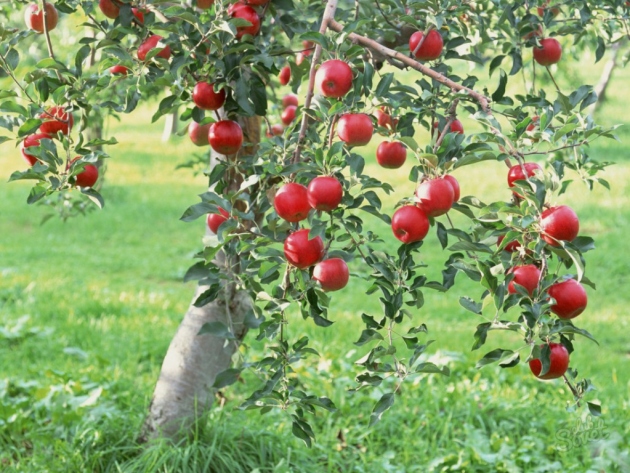
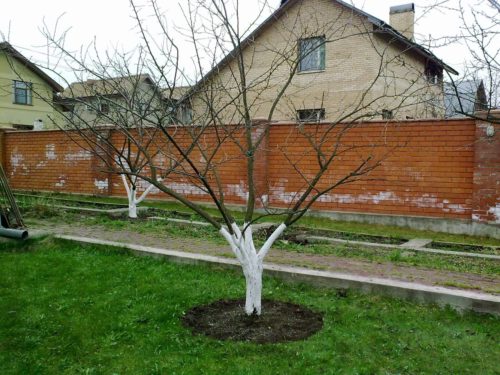
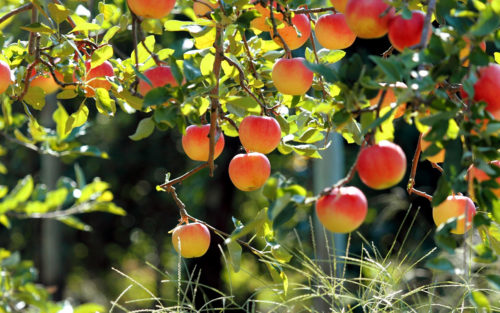
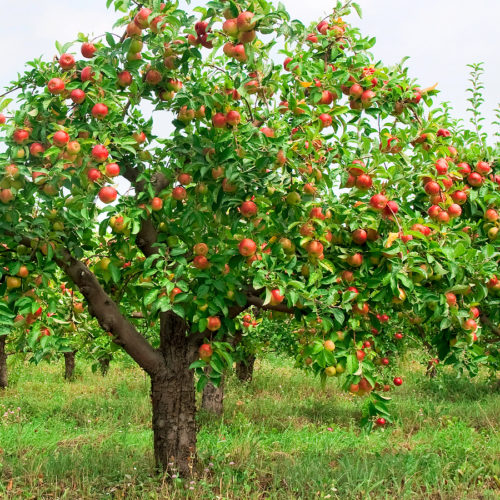
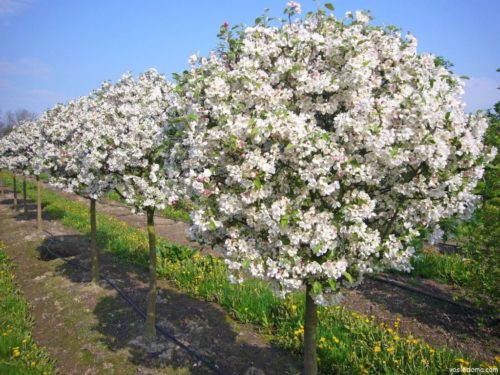
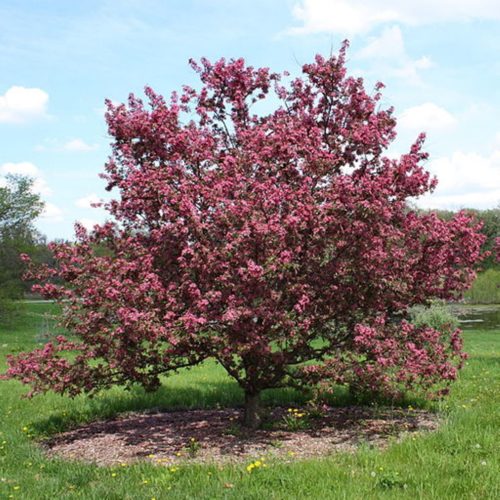
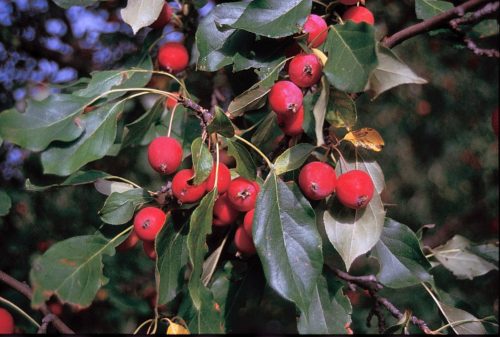
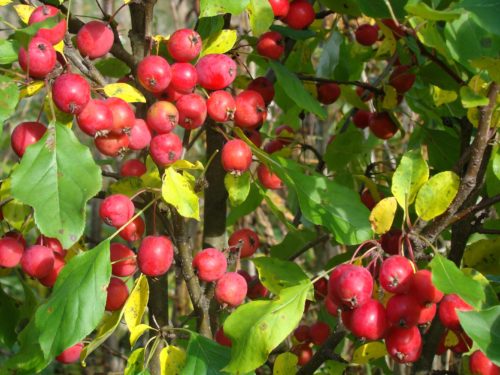
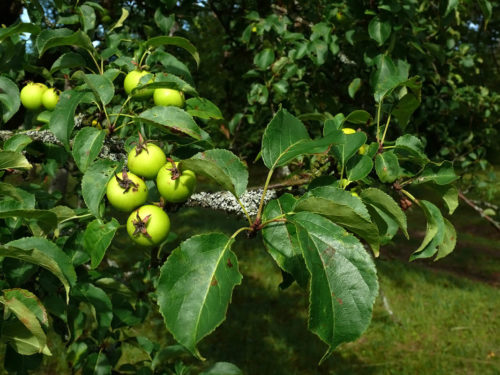
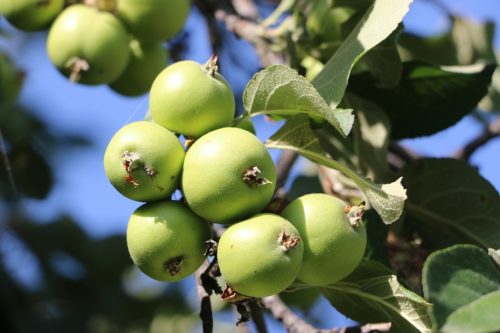

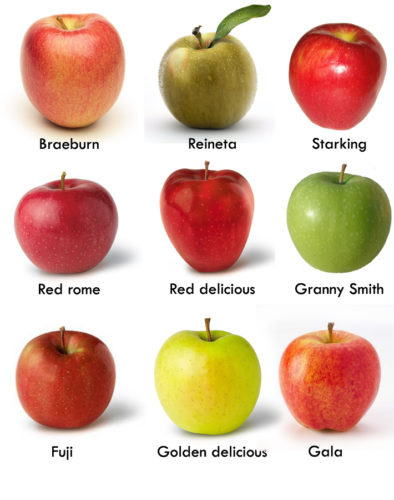
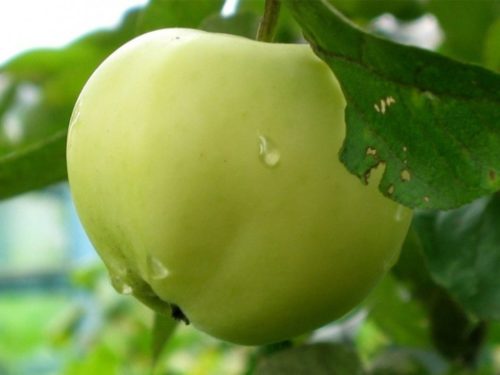
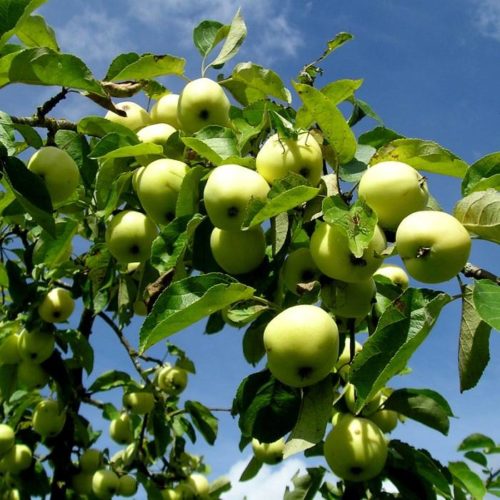
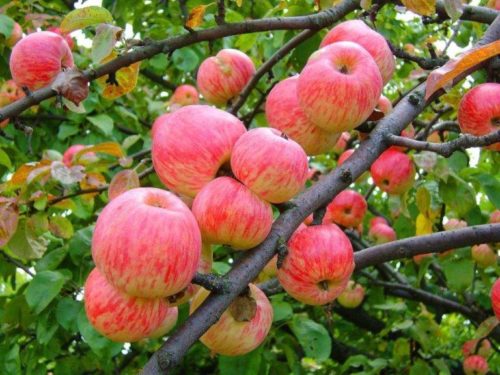
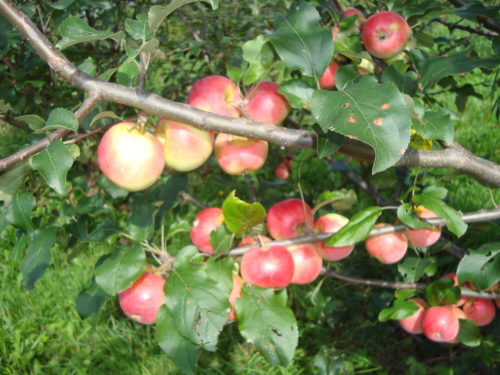
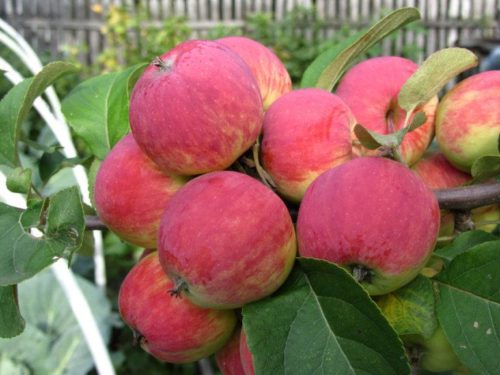
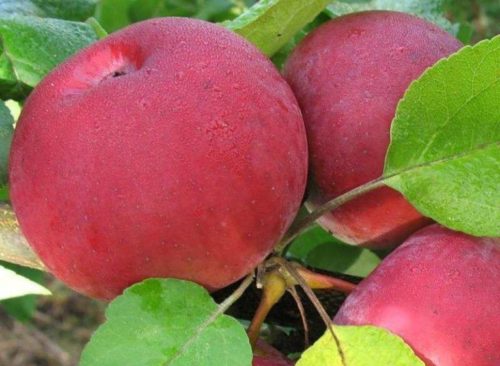
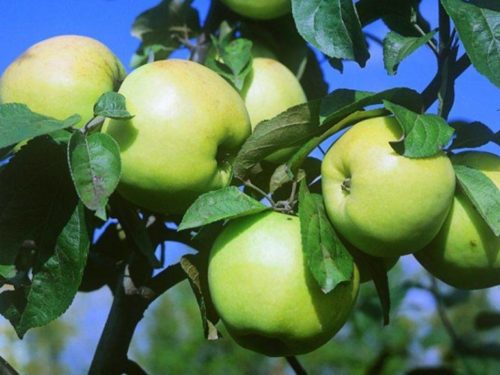
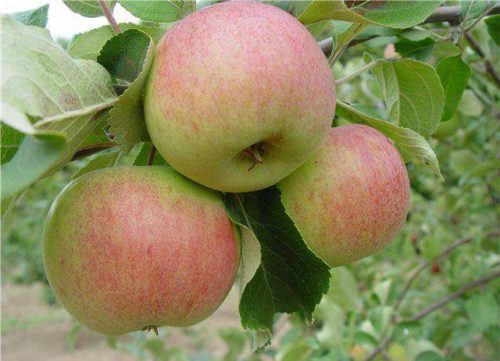
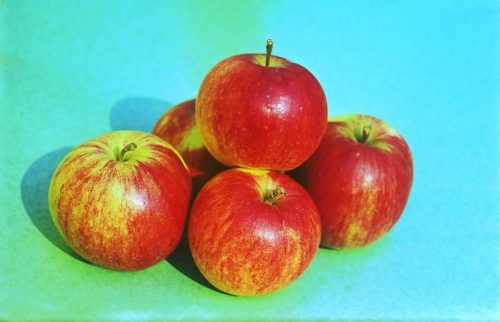
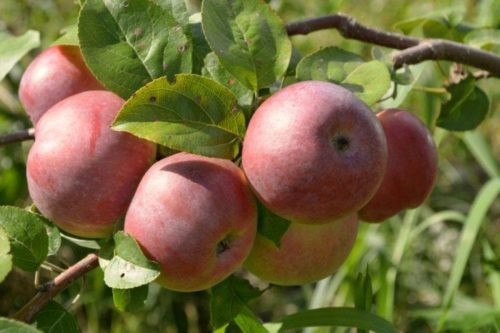




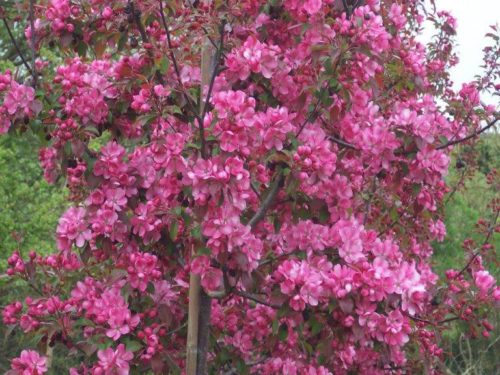
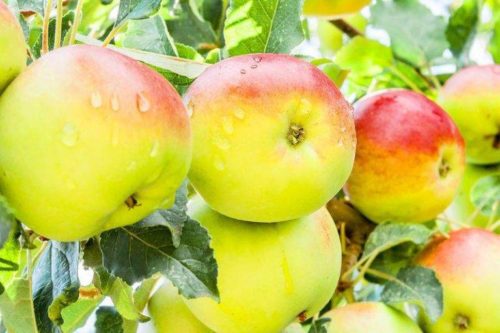
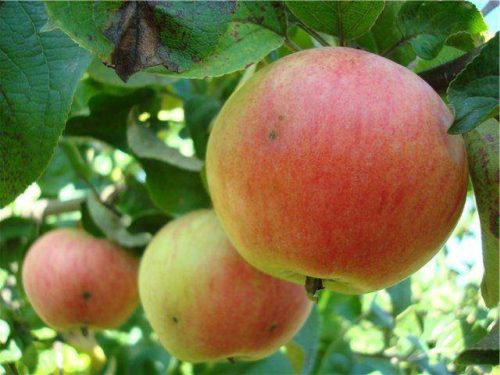
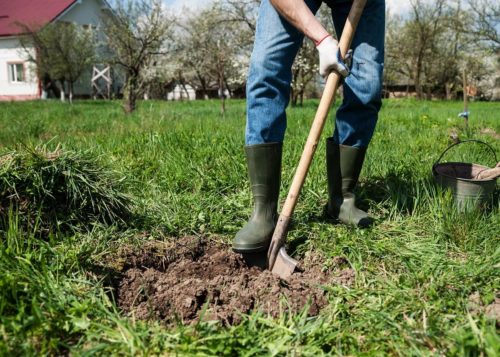
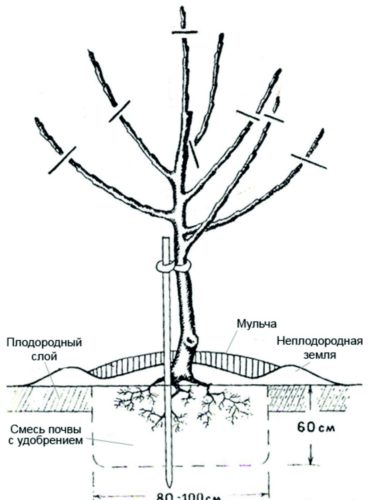

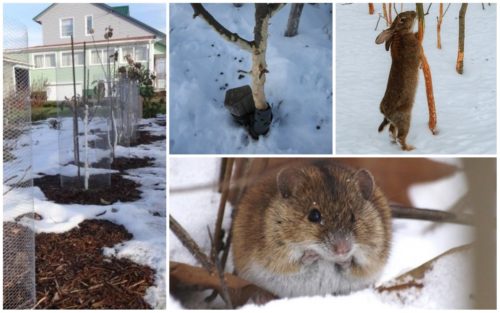
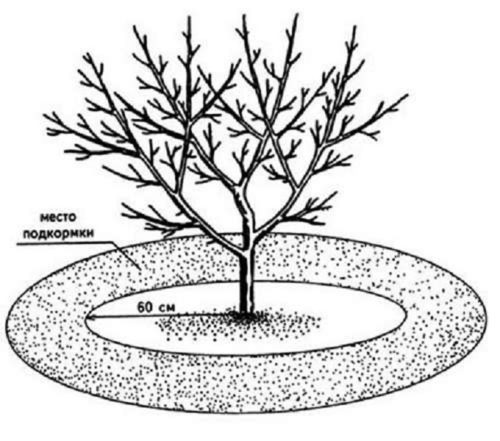
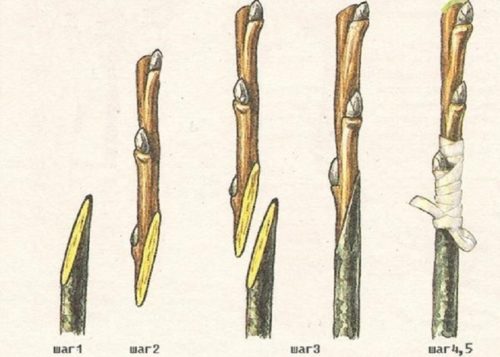
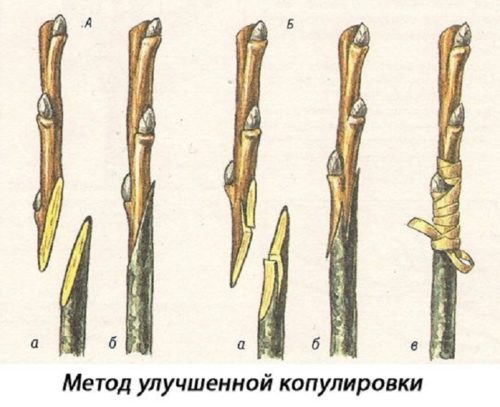
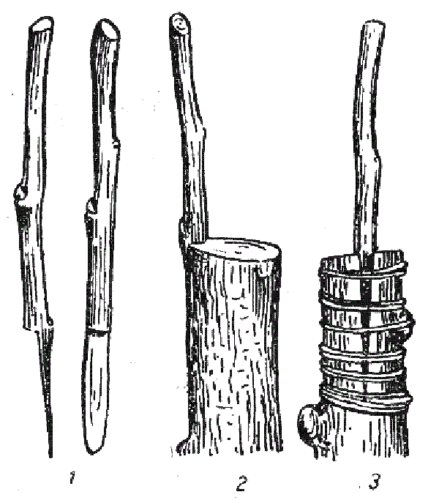
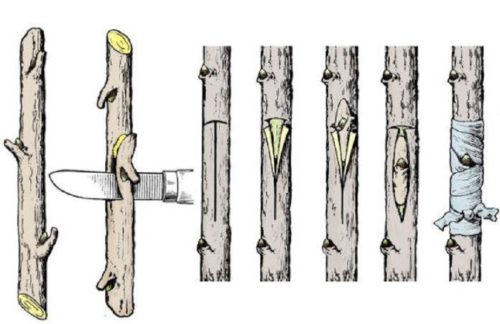

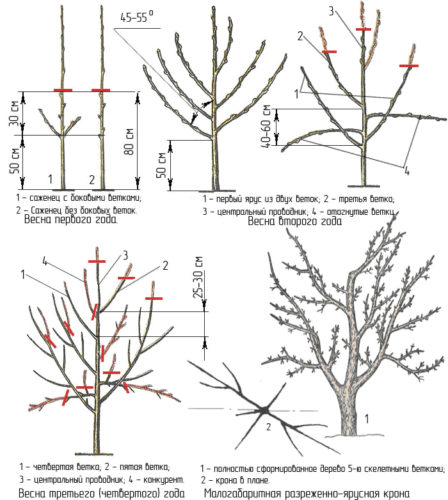
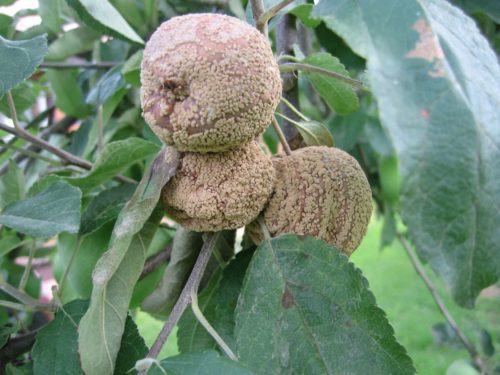
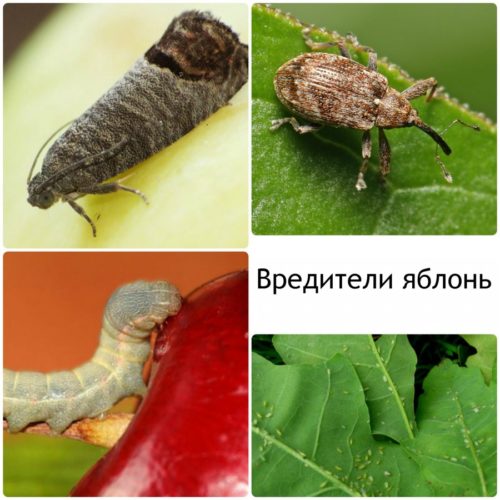
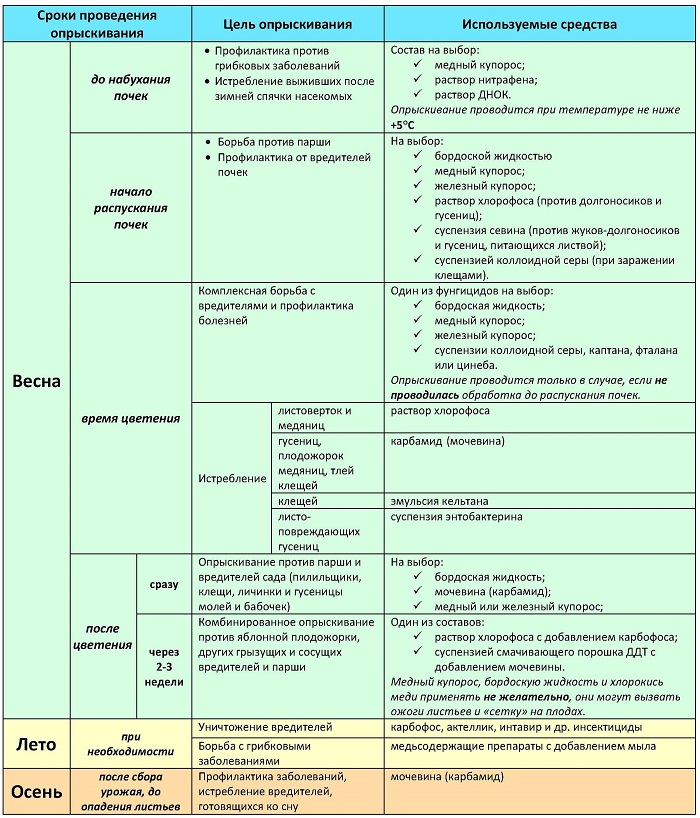












 Start a discussion ...
Start a discussion ...